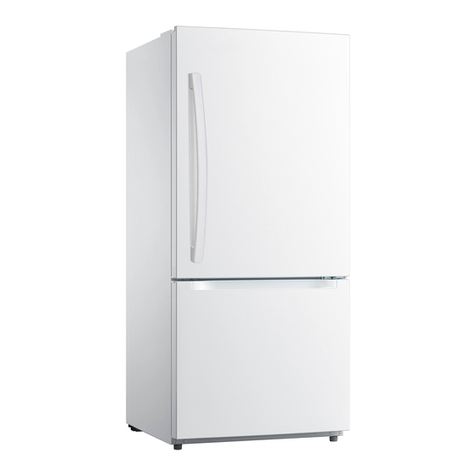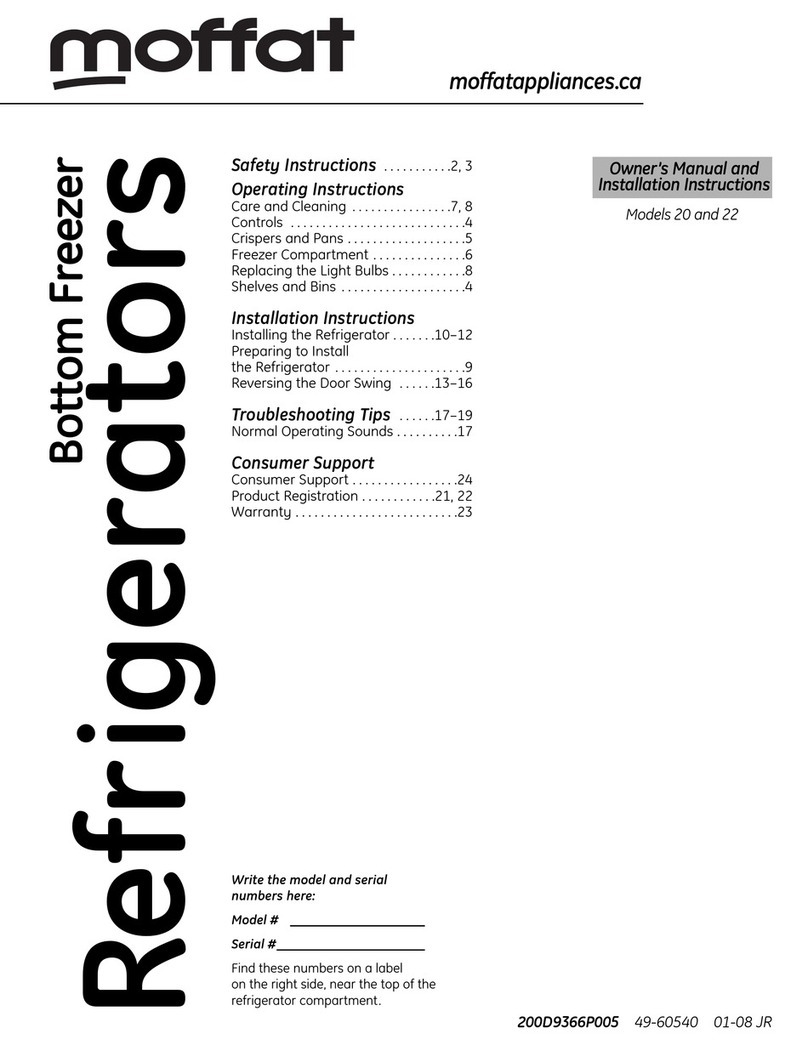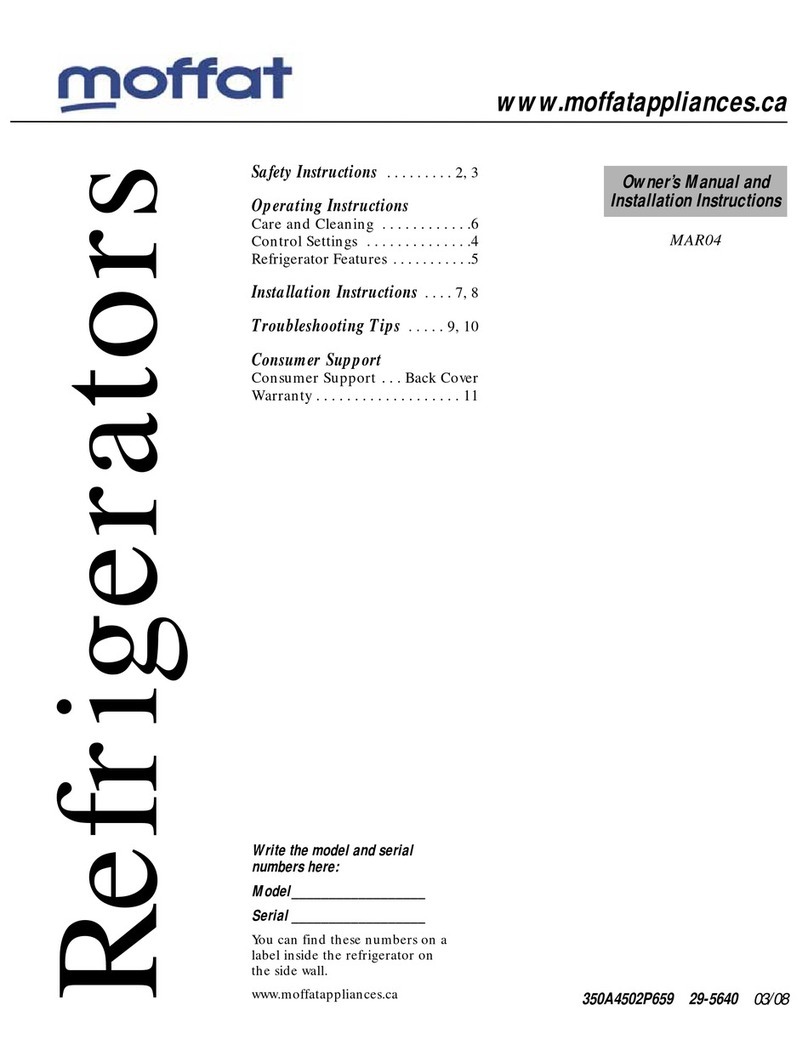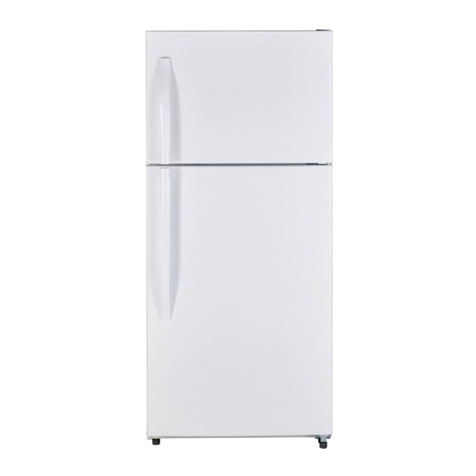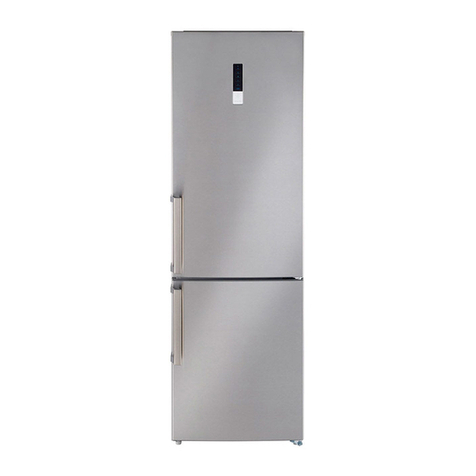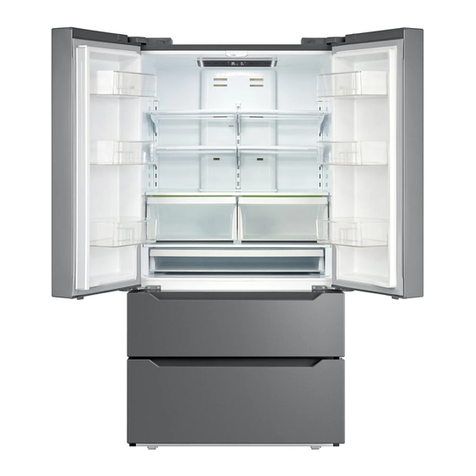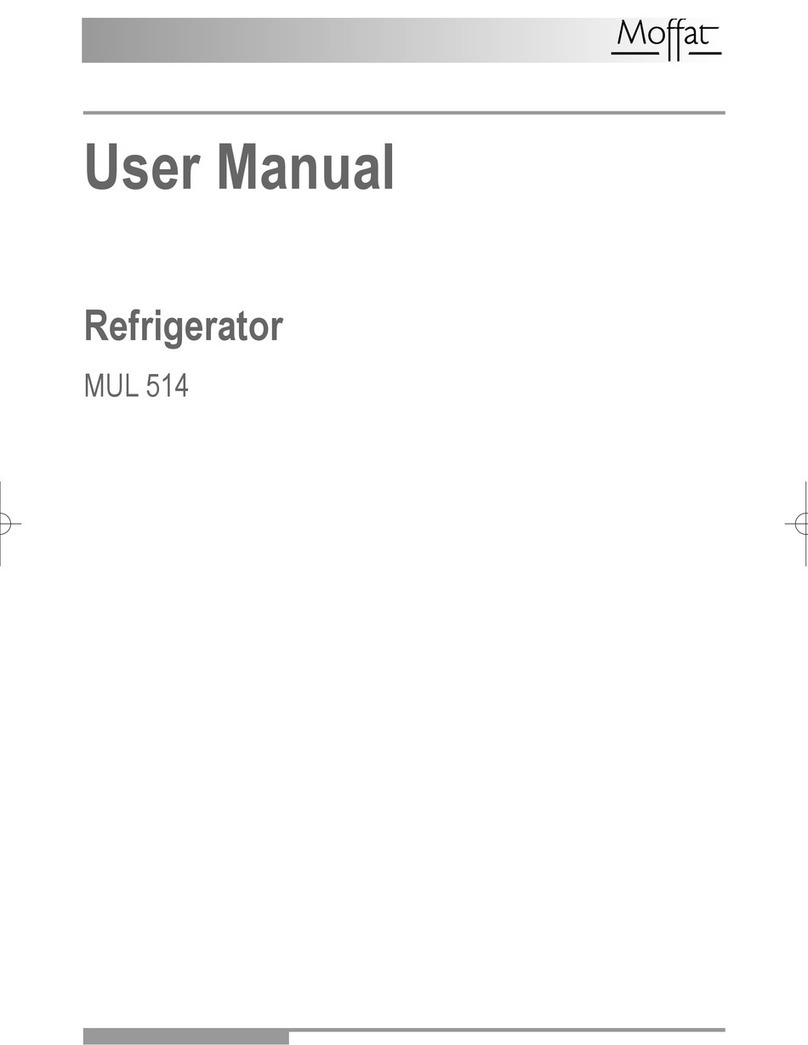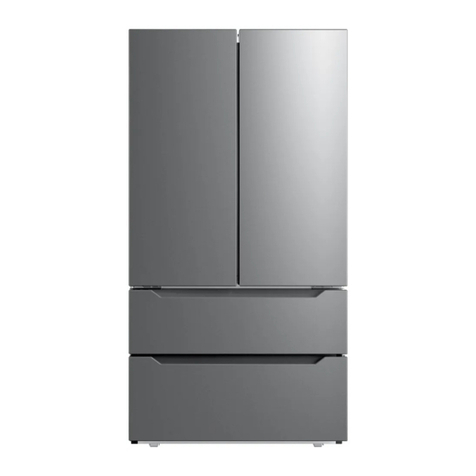
IMPORTANT SAFETY INFORMATION.
READ ALL INSTRUCTIONS BEFORE USING THE APPLIANCE
Introduction
Congratulations on your purchase of this high quality product. These models represent the latest technological breakthrough in the
design of bottom-mount refrigerators and have been designed for exceptional performance and reliability.
CAUTION RISK OF ELECTRIC SHOCK DO NOT
OPEN
This symbol indicates that dangerous voltage,
constituting a risk of electric shock, is present in
this refrigerator.
Read these instructions.
Keep these instructions.
Observe all warnings.
Observe all instructions.
Do not use this refrigerator near water.
Clean only with a damp cloth.
Do not block the ventilation openings. Install the product in
accordance with the manufacturer's instructions.
Install this appliance away from heat sources such as ra-
diators, heat registers, ovens or other equipment (includ-
ing amplifiers) that produce heat.
Do not attempt to modify the safety device of the polarized
or grounded plug. A polarized plug has two prongs, one
wider than the other. A grounding-type plug consists of two
prongs and a third grounding prong. The wide blade or the
third blade has been designed for the user's safety. If the
supplied plug does not fit into the outlet, have an electri-
cian replace the power outlet.
Protect the power cord to prevent it from being stepped on
or crushed, especially at power outlets, power strips and
where it is connected to the refrigerator.
Do not attempt to modify or extend the power cord of this
refrigerator.
Unplug the refrigerator during thunderstorms or when it will
not be used for an extended period of time.
Make sure that the available AC power supply matches the
voltage requirements of this refrigerator.
Do not handle the plug with wet hands. This will result in
risk of electric shock.
Unplug the power cable by holding the plug, never by pull-
ing the power cord.
Turn off the refrigerator before disconnecting it.
All repairs must be carried out by qualified personnel.
Have the appliance repaired if it has been damaged, such
as damaged power supply cord or plug, liquid entering the
refrigerator or falling objects, exposure to rain or water, ab-
normal operation, or falling.
To reduce the risk of fire and electric shock, do not expose
this refrigerator to rain, moisture, splashes or water drops,
and do not place containers filled with liquids on the appli-
ance.
Do not use an extension cord or ungrounded adapters
(two prongs). If the power cord is too short, contact a quali-
fied technician to install an outlet next to the refrigerator.
The use of an extension cord can have negative effects on
the operation of the refrigerator.
This equipment is not intended for use by persons (includ-
ing children) with reduced physical, sensory or intellectual
abilities or without experience and knowledge, unless they
are under supervision or have been informed about the
safe use of the equipment by a person responsible for
their safety.
Children should be supervised to ensure that they do not
play with the appliance.
If the power cord has been damaged, it must be replaced
by the manufacturer, its service department or other quali-
fied persons to avoid any danger.
This symbol indicates that important
operating and maintenance instructions are included in
the documentation accompanying this product.
SAFETY INFORMATION
229-6357 1/20 MCC
